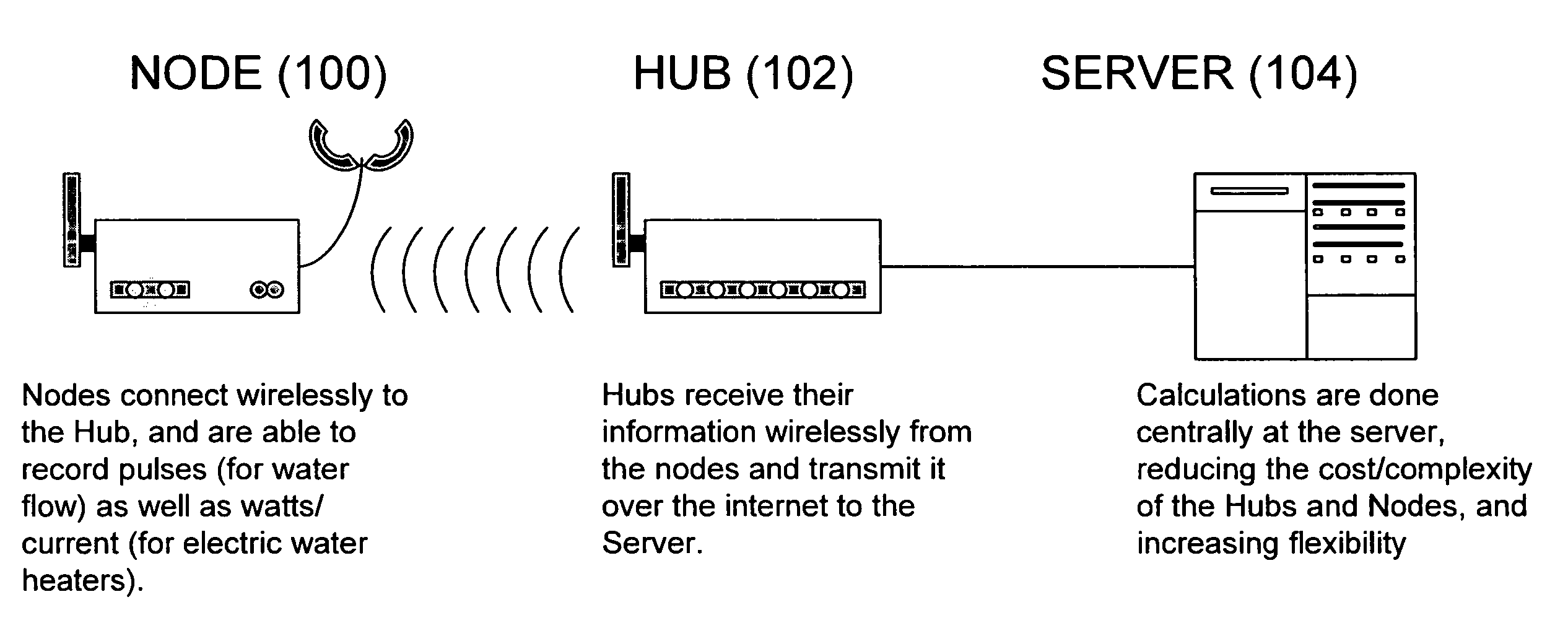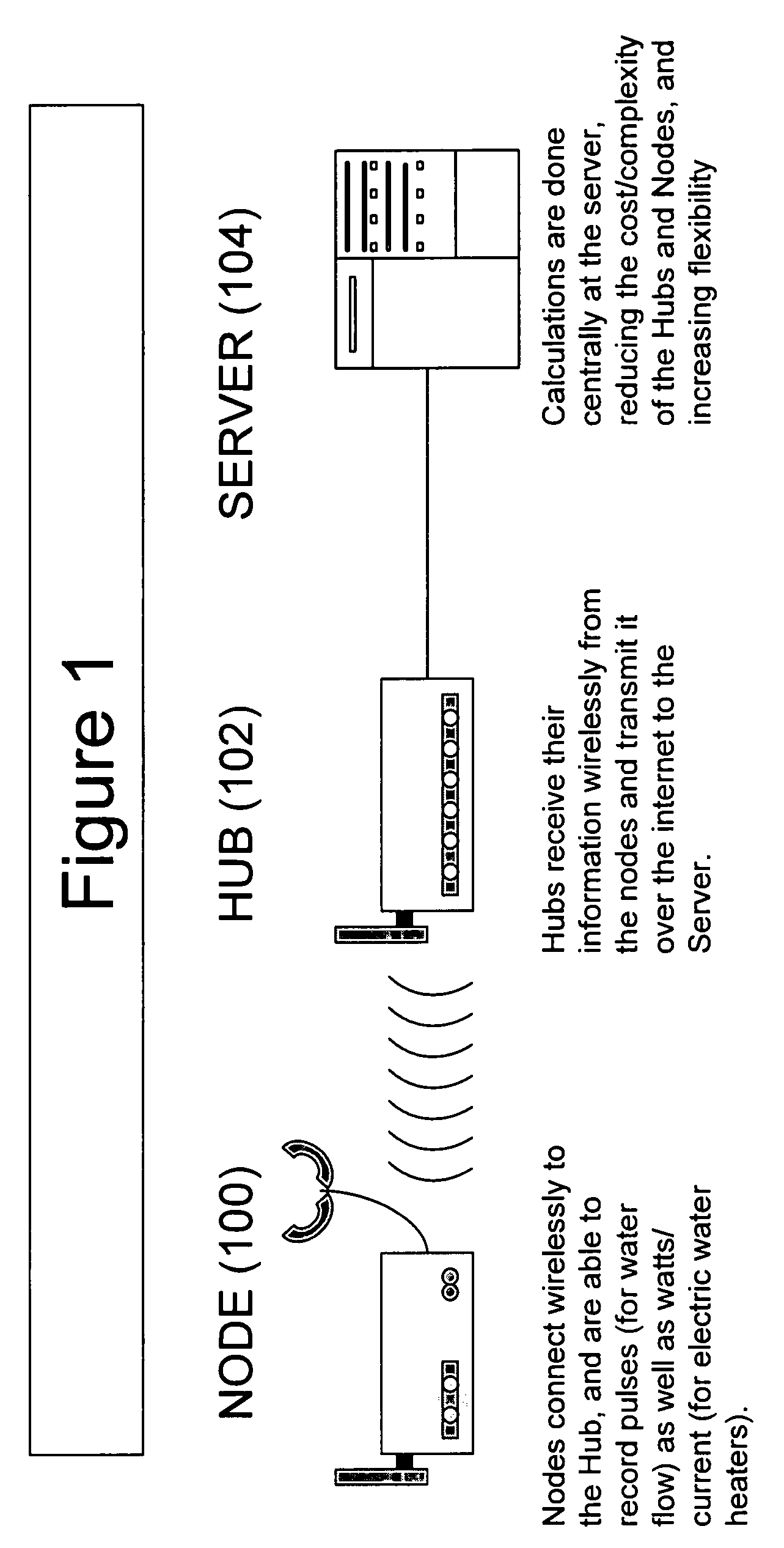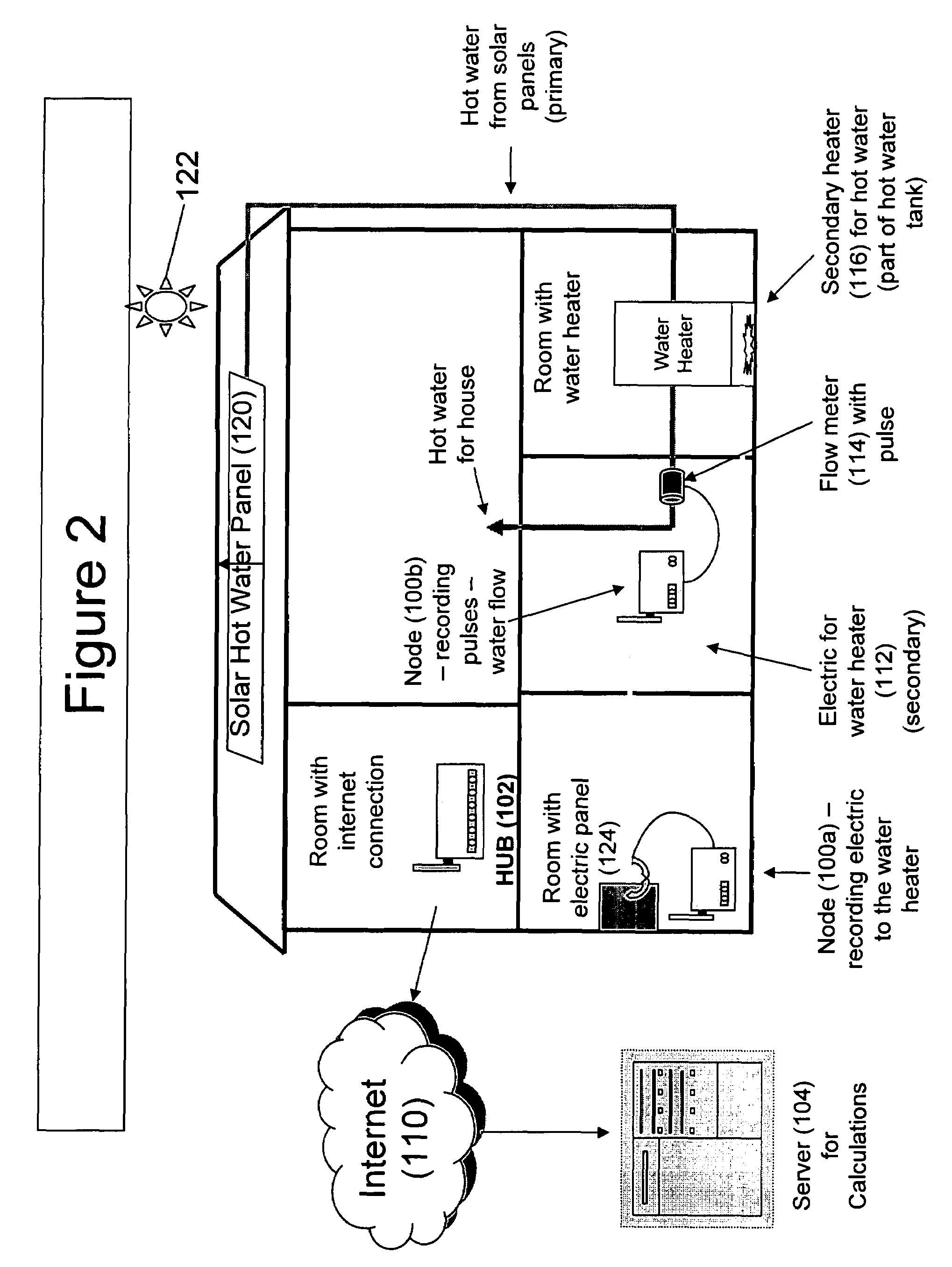Systems and methods for measuring utilized generation of at-premise renewable power systems
a renewable power system and utilized generation technology, applied in the direction of tariff meters, instruments, process and machine control, etc., can solve the problems of high upfront high fixed component and high initial cost of solar panels/systems
- Summary
- Abstract
- Description
- Claims
- Application Information
AI Technical Summary
Benefits of technology
Problems solved by technology
Method used
Image
Examples
Embodiment Construction
[0021]The following detailed description is of the best currently contemplated modes of carrying out the invention. The description is not to be taken in a limiting sense, but is made merely for the purpose of illustrating the general principles of the invention, since the scope of the invention is best defined by the appended claims.
[0022]With reference to FIGS. 1-2, a system for measuring an at-premise renewable Power System (e.g. solar hot water panel (120)) as it is generated at a consumer's premises is provided, the system comprising: at least one at-premise renewable power system (120), wherein the at-premise renewable power system (120) is at least partially powered by at least one alternate energy source (such as the sun 122); at least one meter (114) in communication with each at least one at-premise renewable power system (120), wherein each meter (e.g. 114) measures usage by each at-premise renewable power system (120); at least one data hub (102); at least two communicat...
PUM
 Login to View More
Login to View More Abstract
Description
Claims
Application Information
 Login to View More
Login to View More - R&D
- Intellectual Property
- Life Sciences
- Materials
- Tech Scout
- Unparalleled Data Quality
- Higher Quality Content
- 60% Fewer Hallucinations
Browse by: Latest US Patents, China's latest patents, Technical Efficacy Thesaurus, Application Domain, Technology Topic, Popular Technical Reports.
© 2025 PatSnap. All rights reserved.Legal|Privacy policy|Modern Slavery Act Transparency Statement|Sitemap|About US| Contact US: help@patsnap.com



